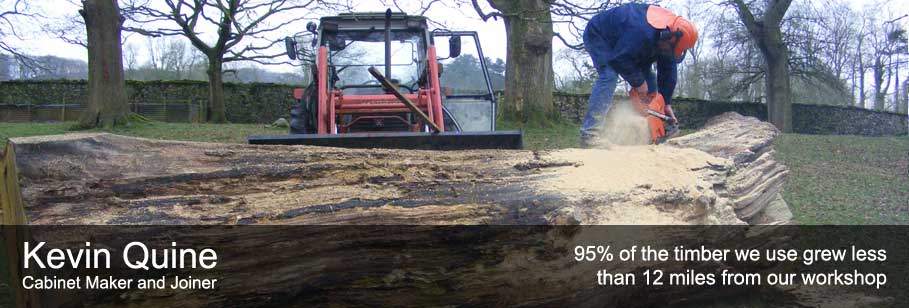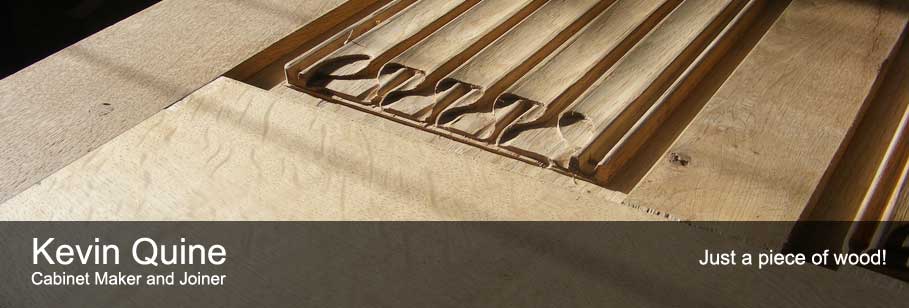About Us
Our workshop has the facility to convert locally grown timber, which is then stored and seasoned on the premises, The majority of our timber is sourced within a 12 mile radius of our workshop, and is taken from sustainable and well managed woodlands, therefore our products are grown, designed and made in Cumbria.
We work in most of the English hardwoods and basically,
IF IT IS MADE OUT OF WOOD, THEN WE CAN MAKE IT,
and, like our strapline says
'YOU CAN'T SEE THE WOOD 'TIL WE CUT THE TREES!!
Products can be made using traditional tools, materials and methods, or we also have modern equipment which is used when appropraite.
The majority of our work is bespoke to the client, taking the job through from an idea, right the way through the design process, to cutting and kilning the timber, to manufacture and to installation.
Our furniture is made from kiln dried timber, or our green oak fire surrounds are built to enhance a 16th century room but are equally 'at home' in a modern house. Our beautiful mirrors look fantastic in all settings and can be made to size to suit your room. We also turn massive bowls which show the true beauty of the wood, we currently have some amazing sycamore and elm bowls in stock.
Together with furniture, decorative mirrors and bowls, we can also supply beams and manufacture roof trusses, to order using local green English Oak.

The various types of commercial timber used in this country became popular because they were:
- Easily available in large quantities
- Right for the specific job (durable)
- Work well either by hand or machine
Each decade appears to bring with it a new vogue in the type of timber used in the commercial field.
Some timbers are very specialised:
- Hickory is used for hammer handles as it is strong and will take a shock.
- Ash is used to make car frames as it is very flexible.
- Willow is used for making cricket bats because it is springy.
- Sycamore is used for making wooden spoons, bowls and water carriers as it has no taste.
- Oak is used for making beams and structures as it is extremely strong.
Silver Birch (Betula pendula)
The grain of the silver birch is white, soft and fibrous and as it is woolly it is hard to finish and so it is normally only used for turning.
Sycamore - (Acer pseudo platanus)
Sycamore wood is very white and often used to make wooden spoons as it doesn't taste. In olden times people would have used Sycamore to make bowls and water carriers as well as spoons.
Later it was used to make farmhouse tables which were scrubbed clean each day by the farmer's wife.
Mahogany and the Slave Trade
The ships which worked the slave and spice trade between England, Africa and South America sometimes, came back to England without a cargo, however, the ship needed ballast to keep it on an even keel. This ballast was mainly made up of tree trunks.
Furniture makers had their workshops in the industrial part of the town often close to the harbour and seeing this timber mounting up on the quayside as a waste product, it was arranged for some of it to be cut. It was then discovered that not only was this timber good to work but it was also very decorative as well.
This resulted in a change in the furniture trade as fashion continued to move away from heavier pieces of oak to using mahogany.
As the timber became more in demand, it was no longer brought in as ballast but as the cargo and high import duties had to be paid. Mahogany remains both an expensive and popular timber today. It has become politically incorrect to use mahogany unless it is yielded from a sustainable source.


